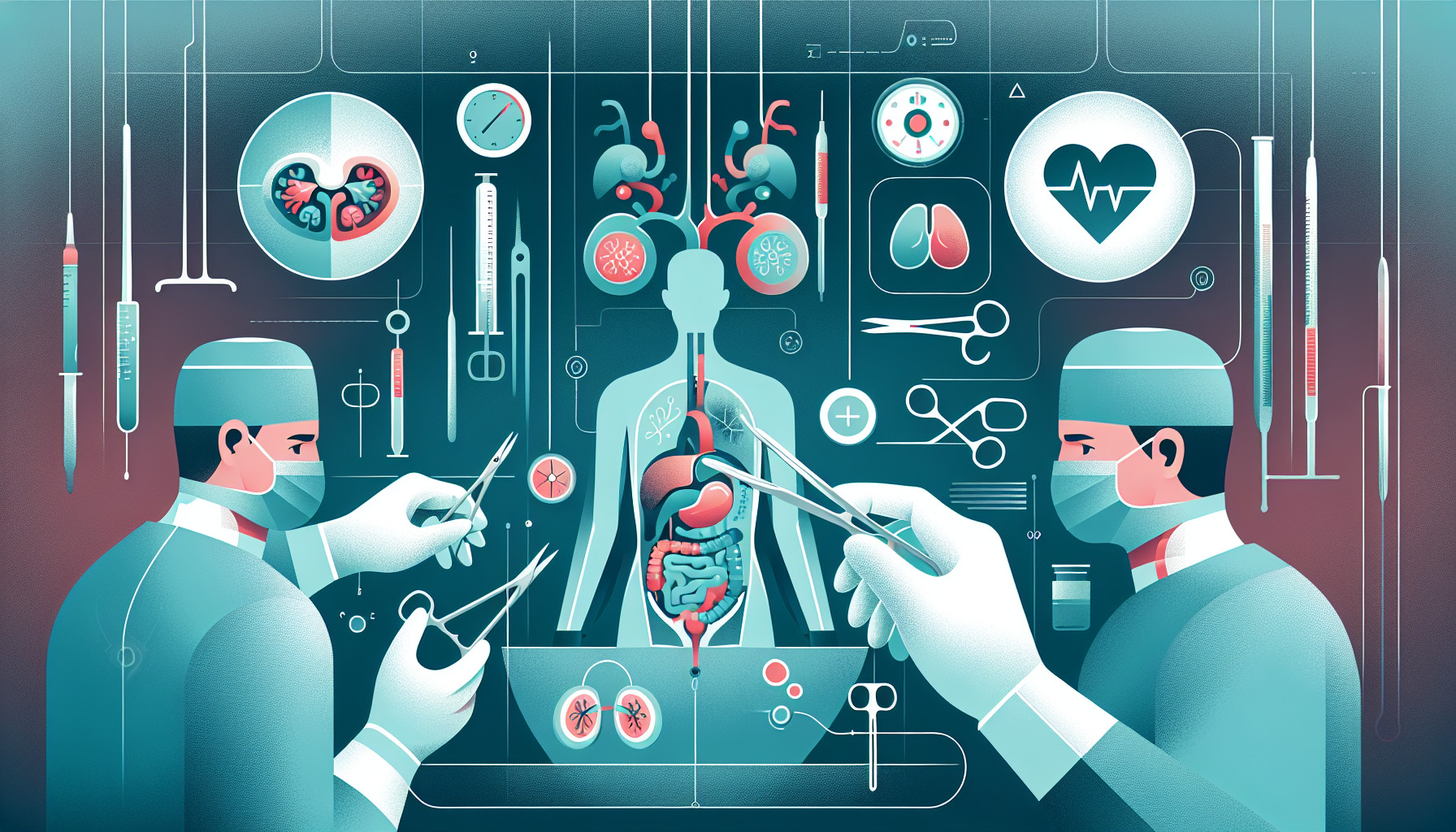Our Summary
This research paper discusses the evolution of surgical techniques for treating bladder exstrophy epispadias complex, a birth defect involving the bladder. The techniques have moved from multi-stage reconstruction to a complete primary repair and radical mobilization. However, complications after surgery can lead to more procedures. Ultimately, many patients achieve bladder control rates of 85-89%, but often only after bladder enlargement and regular catheter use.
The situation is more complex in poorer areas, where low levels of education and poverty influence the decision to opt for a single operation to create a low-pressure reservoir. This aims to preserve the upper part of the urinary tract and achieve good primary continence. Therefore, primary urinary diversion, which redirects urine flow through an alternative route, should be offered as a surgical option for patients with limited health care access.
In the study, Yogesh’s cystorectostomy, a modified version of a previous procedure, is highlighted. In this procedure, the bladder plate is directly linked to the recto-sigmoid pouch, without moving the ureters from their original location. Short-term follow-ups have shown positive results with all patients achieving total urinary continence over time. The procedure also preserves the functions of the upper urinary tract, leading to high levels of satisfaction from both patients and parents, and overall improvement in quality of life.
FAQs
- What are the surgical techniques for the management of bladder exstrophy epispadias complex?
- What is the success rate of achieving continence after bladder augmentation and clean intermittent catheterization?
- What is Yogesh’s cystorectostomy and how does it improve the quality of life for patients with bladder exstrophy epispadias complex?
Doctor’s Tip
One helpful tip a doctor might tell a patient about pediatric urologic reconstruction is to ensure strict adherence to post-operative care instructions, including proper wound care, medication management, and follow-up appointments. It is important to communicate any concerns or changes in symptoms to the healthcare team promptly to prevent complications and promote optimal healing.
Suitable For
Patients who are typically recommended pediatric urologic reconstruction include those with bladder exstrophy epispadias complex, which may require staged reconstruction, complete primary repair, or radical mobilization. Post-operative complications may necessitate multiple surgical procedures, with continence rates often achieved after bladder augmentation and clean intermittent catheterization. Patients in resource-poor settings may benefit from primary urinary diversion as a surgical option, especially if access to healthcare facilities is limited. Yogesh’s cystorectostomy, a modification of a traditional procedure, has shown promising short-term results in achieving total urinary continence and preserving upper tract functions. Overall, pediatric patients with bladder exstrophy epispadias complex may benefit from urologic reconstruction to improve their quality of life.
Timeline
Before pediatric urologic reconstruction, a patient may experience symptoms such as urinary incontinence, bladder exstrophy, and epispadias. The patient may undergo various diagnostic tests and consultations with urologists to determine the best course of treatment.
After pediatric urologic reconstruction, the patient may undergo staged reconstruction, complete primary repair, or radical mobilization depending on the severity of their condition. Post-operative complications may arise, leading to the need for additional surgical procedures.
Continence rates of 85-89% may be achieved after bladder augmentation and clean intermittent catheterization. In resource-poor settings, patients may opt for a single operative procedure for creation of a low-pressure reservoir to preserve the upper tract and achieve good primary continence.
Yogesh’s cystorectostomy is a modification of the Heitz-Boyer-Hovelacque procedure, which involves directly anastomosing the bladder plate to the recto-sigmoid pouch without mobilizing the ureters. Short-term follow-ups have shown total urinary continence in patients, with preserved upper tract functions, high parental and patient satisfaction, and an overall improvement in quality of life.
What to Ask Your Doctor
What are the potential risks and complications associated with pediatric urologic reconstruction surgery?
What is the expected recovery time and post-operative care for my child after the surgery?
How will the surgery affect my child’s bladder and urinary function in the long term?
Are there any alternative treatment options available for my child’s condition?
What is the success rate of pediatric urologic reconstruction surgeries in children with similar conditions to my child?
How often will my child need follow-up appointments and monitoring after the surgery?
Are there any lifestyle changes or restrictions my child will need to follow after the surgery?
How can I best support my child through the surgical process and recovery period?
What resources are available for families who may have limited access to healthcare facilities for ongoing care and support after the surgery?
Are there any specific considerations or factors to keep in mind for pediatric urologic reconstruction surgeries in resource-poor settings?
Reference
Authors: Sarin YK, Sekhon V. Journal: Indian J Pediatr. 2017 Sep;84(9):715-720. doi: 10.1007/s12098-017-2419-9. Epub 2017 Jul 18. PMID: 28721463
